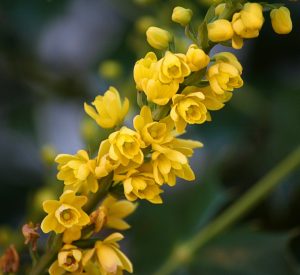
One unique adage Oregon residents have spoken over countless years is that Oregon summers don’t really start until after the July 4th Holiday Weekend. Mild, rainy springs lasted throughout the month of June, making a June a pleasant – and sometimes wet – month, justifying this quip in the minds of many. Yet the past few years have offered a different trend. Today, in the middle of August, a hot sun hovers over the Willamette Valley, smashing temperature records and increasing stock prices for pop-up lemonade stands. For home owners and gardeners alike, this means more expensive watering bills, as the intense heat combined with dry weather significantly impacts the amount of water needed to see a landscape and garden survive. Fret not, as there are ways to combat drought-like weather patterns and ensure garden success.
What to Plant?

Rock Rose
One of the best ways to ensure your landscape can tolerate the heat is to incorporate drought tolerant plants into your garden design. Known as “Mediterranean gardening” these are plants that take advantage of Oregon’s mild wet winters and hot dry summers (for a great read on Mediterranean gardening, read this October 2008 article from the Oregon State University Extension Service). Plants such as the Rock Rose (Cistus), Oregon grape (Mahonia aquifolium), and even Rosemary (Rosmarinus officinalis) can tolerate dry spells and added heat. For a longer list of drought tolerant plants that would do well in the Pacific Northwest, check out this PDF from King County’s (Washington) website. Many of these are readily available at our Glenwood Corner Store Nursery.
What to plant in?
The type of soil you plant in has a major impact on how drought tolerant your garden will be. Different soils will vary widely in the way they function in terms of water retention. If you find yourself checking the moisture content in your soil and finding it always dry, you may consider a water-retentive soil such as Lane Forest Products’ Nature’s Best, or build a custom soil blend with coir pith in it to improve water holding capacity. Make sure to “fluff” and till it as needed, opening up important pores the water needs to penetrate properly.
Reduce your watering needs
Spreading a layer of mulch or compost over a garden will help preserve moisture within the ground and reduce watering needs. Try using Lane Forest Product’s Bark-O-Mulch, Hemlock, or Pebble bark. Composts, like our Blended Mint compost, work great at conserving moisture when applied as a 3” thick covering. Not only do these preserve moisture, but when composts are applied they can also increase the amount of beneficial nutrients available to your plants!
So how DO you water?
 Finally, WHEN you water your plants plays a huge role on how much water they will need. Consider watering your plants in the morning and applying the water directly in the vicinity of plant roots instead of cascading a shower across all the plants in an area (think using a watering can vs. a sprinkler). Though the amount of time you spend with each individual plant will likely increase as you target specific root zones, the plants should hold water better and be able to survive the dry heat of the day. For more watering tips and information, check out this infographic from Lane Forest Products.
Finally, WHEN you water your plants plays a huge role on how much water they will need. Consider watering your plants in the morning and applying the water directly in the vicinity of plant roots instead of cascading a shower across all the plants in an area (think using a watering can vs. a sprinkler). Though the amount of time you spend with each individual plant will likely increase as you target specific root zones, the plants should hold water better and be able to survive the dry heat of the day. For more watering tips and information, check out this infographic from Lane Forest Products.
When the heat comes, we all must find ways to stay cool and well hydrated, and your lawn and garden are no different. With hotter and drier days upon us, following a few of these tips will help your garden survive no matter what Mother Nature brings!
